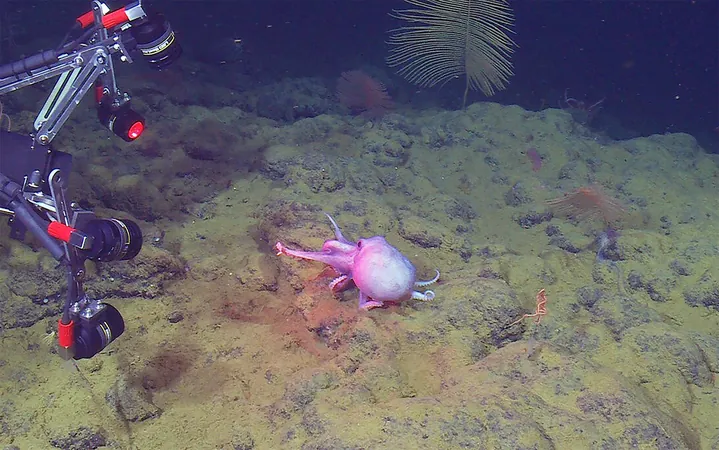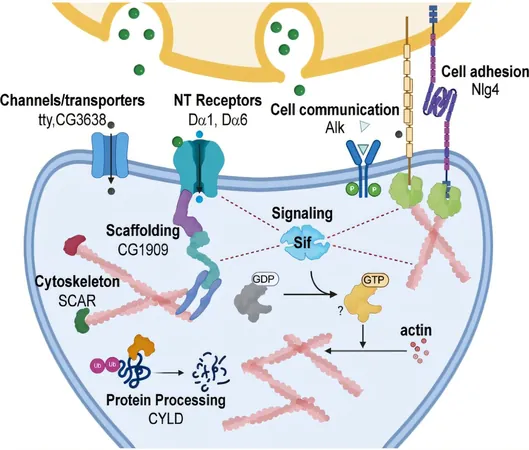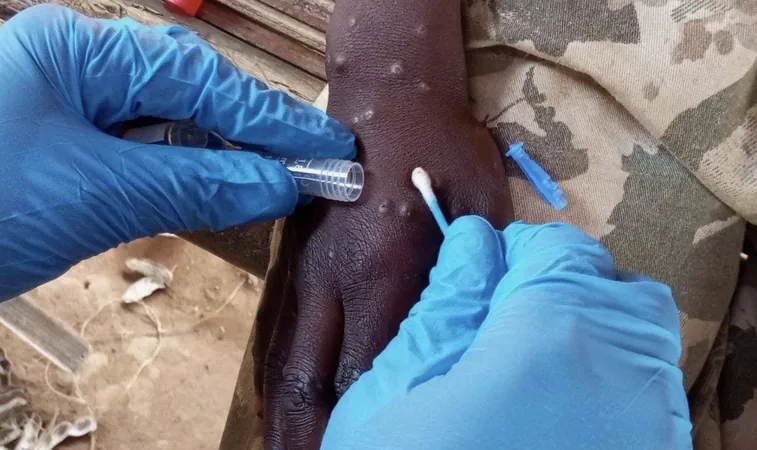
Unlocking the Mysteries of the Deep: How New Tech Inspired by Octopus Movements Could Change Robotics Forever!
2025-08-10
Author: Yu
In a groundbreaking development, researchers have utilized an innovative camera system named EyeRIS to capture stunning three-dimensional footage of deep-sea octopuses nearly two miles beneath the ocean's surface. This unprecedented view reveals intricate details of their movements, which could revolutionize the design of flexible robots.
Octopus Insights: A Glimpse into Their Underwater World
Filmed at the Octopus Garden, a nursery site off the coast of Central California that houses thousands of brooding pearl octopuses, this research was spearheaded by the Monterey Bay Aquarium Research Institute (MBARI). The team, including Principal Engineer Kakani Katija and Senior Research Specialist Crissy Huffard, embarked on a mission to film these exceptional creatures using EyeRIS.
Behind the Scenes: How EyeRIS Works
EyeRIS operates on a remotely controlled vehicle that dives to depths of about 9,850 feet—an area devoid of sunlight yet teeming with life. This cutting-edge camera system thrives in low-light conditions, capturing images without startling the animals, thanks to its lack of intrusive lighting.
By delivering real-time skeletal models of each octopus's posture, scientists can effectively track individual octopuses as they navigate their rocky surroundings. With the ability to adjust focus and angle on the fly, researchers maximize their observations during expensive and limited dive opportunities.
Revolutionary Imaging Technology
At the core of EyeRIS is a sophisticated microlens array that captures multiple perspectives in one shot using light-field imaging. The software seamlessly stitches these perspectives together into sharp images, allowing algorithms to analyze the octopus's movements without the need for invasive markers.
By observing the natural behaviors of these animals in their environment, scientists have gleaned vital insights into how octopus arms function, revealing their adaptability and efficiency.
Learning from Nature: Applying Insights to Robotics
The data collected from EyeRIS has significant implications for soft-robot design. Engineers believe these flexible joints and muscle dynamics can inform the creation of robots capable of maneuvering in diverse environments. Early prototypes utilizing silicone sleeves and pressurized systems aim to mimic the natural gait of octopuses, paving the way for novel applications in various fields.
Environmental Stewardship Through Innovation
The Octopus Garden is located within the Monterey Bay National Marine Sanctuary, a region facing pressures from deep-sea mining. Non-invasive technology like EyeRIS provides compelling evidence of the importance of preserving fragile underwater ecosystems. By tracking how environmental changes affect these creatures, researchers advocate for stronger conservation measures.
EyeRIS: The Future of Deep-Sea Exploration
Supported by significant funding from notable foundations, EyeRIS is poised for future missions. The next deployment will focus on hydrothermal seeps, investigating ecosystems where methane bubbles attract octopuses and crabs. The technology may even inspire future explorations of celestial bodies like Europa.
With plans to share the footage with educators and filmmakers, MBARI aims to ignite public interest in ocean conservation. The revelations from this research could reshape our understanding of both robotics and marine ecosystems, making clear the value of technology in unveiling the secrets of the deep.



 Brasil (PT)
Brasil (PT)
 Canada (EN)
Canada (EN)
 Chile (ES)
Chile (ES)
 Česko (CS)
Česko (CS)
 대한민국 (KO)
대한민국 (KO)
 España (ES)
España (ES)
 France (FR)
France (FR)
 Hong Kong (EN)
Hong Kong (EN)
 Italia (IT)
Italia (IT)
 日本 (JA)
日本 (JA)
 Magyarország (HU)
Magyarország (HU)
 Norge (NO)
Norge (NO)
 Polska (PL)
Polska (PL)
 Schweiz (DE)
Schweiz (DE)
 Singapore (EN)
Singapore (EN)
 Sverige (SV)
Sverige (SV)
 Suomi (FI)
Suomi (FI)
 Türkiye (TR)
Türkiye (TR)
 الإمارات العربية المتحدة (AR)
الإمارات العربية المتحدة (AR)